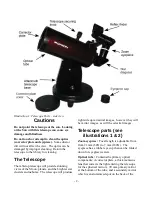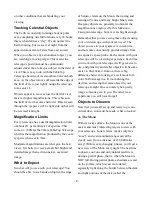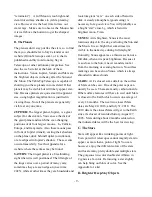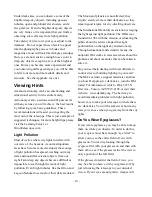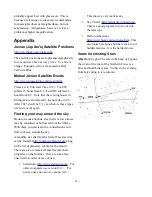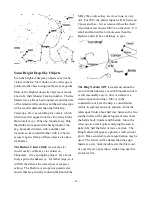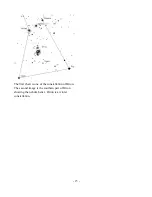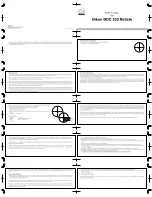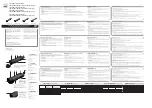
At the end of your observing session, be sure to
turn the power knob counterclockwise until it
clicks off. When the two white dots on the EZ
Finder II’s body and power knob are lined up, the
EZ Finder II is turned off.
Replacing the Battery
Replacement 3-volt lithium (CR-2032) batteries
are available from many retail outlets. Remove
the old battery by inserting a small flat-head
screwdriver into the slot on the battery cover and
gently prying open the cover. Then carefully pull
back on the retaining clip and remove the old
battery. Do not over bend the retaining clip. Then
slide the new battery under the battery lead with
the positive (+) side facing down and replace the
battery cover.
Turn off the finder power after use. The user
is responsible for purchasing and replacing the
battery if due to leaving the finder power on.
Using Your Telescope
Choosing an Observing Site
When selecting a location for observing, get as far
away as possible from direct artificial light such
as streetlights, porch lights, and automobile
headlights. The glare from these lights will
greatly impair your dark-adapted night vision.
Avoid viewing over rooftops and chimneys, as
they often have warm air currents rising from
them. Similarly, avoid observing indoors through
a window, either open or closed, because the
temperature difference between the indoor and
outdoor air will cause image blurring and
distortion. Window glass may also introduce
glare, internal reflections, or double-images into
your view.
If at all possible, escape the light-polluted city sky
and head for darker country skies. You will be
amazed at how many more objects are visible in a
dark sky!
“Seeing” and Transparency
Atmospheric conditions vary significantly from
night to night. “Seeing” refers to the steadiness of
the Earth’s atmosphere at a given time. In
conditions of poor seeing, atmospheric turbulence
causes objects viewed through the telescope to
“boil”. If, when you look up at the sky with your
naked eyes, the stars are twinkling noticeably, the
seeing is bad and you will be limited to viewing
with low powers (bad seeing affects images at
high powers more severely). Planetary observing
may also be poor.
In conditions of good seeing, star twinkling is
minimal and images appear steady in the
eyepiece. Seeing is best over- head, worst at the
horizon. Also, seeing generally gets better after
midnight, when much of the heat absorbed by the
Earth during the day has radiated off into space.
Especially important for observing faint objects is
good “transparency” – air free of moisture,
smoke, and dust. All tend to scatter light, which
reduces an object’s brightness. Transparency is
judged by the magnitude of the faintest stars you
can see with the unaided eye (6th magnitude or
fainter is desirable).
If you cannot see stars of magnitude 3.5 or
dimmer then conditions are poor. Magnitude is a
measure of how bright a star is – the brighter a
star is, the lower its magnitude will be. A good
star to remember for this is Megrez (mag. 3.4),
which is the star in the “Big Dipper” connecting
the handle to the “dipper”. If you cannot see
Megrez, then you have fog, haze, clouds, smog,
- 7 -
Summary of Contents for StarMax 90
Page 16: ......


